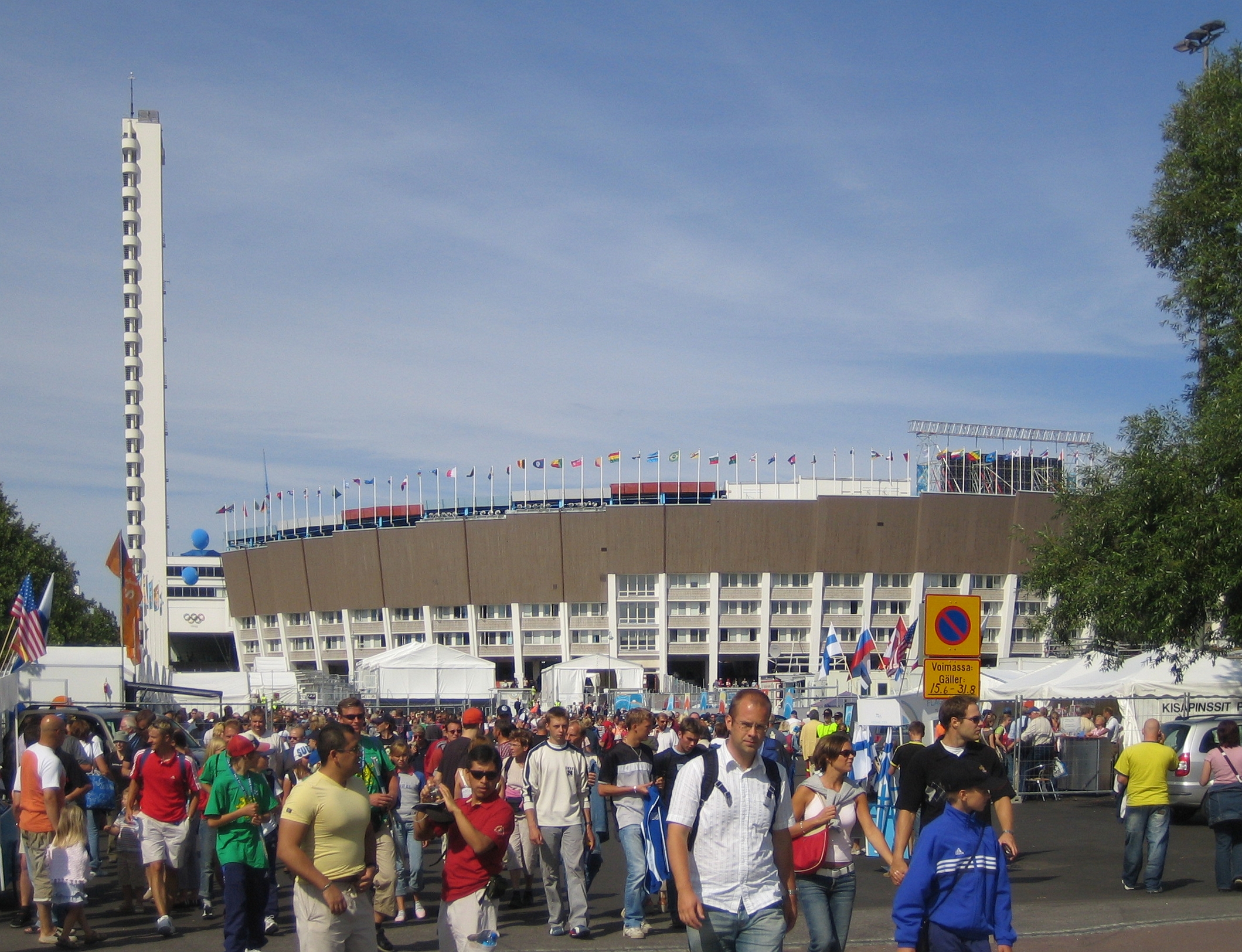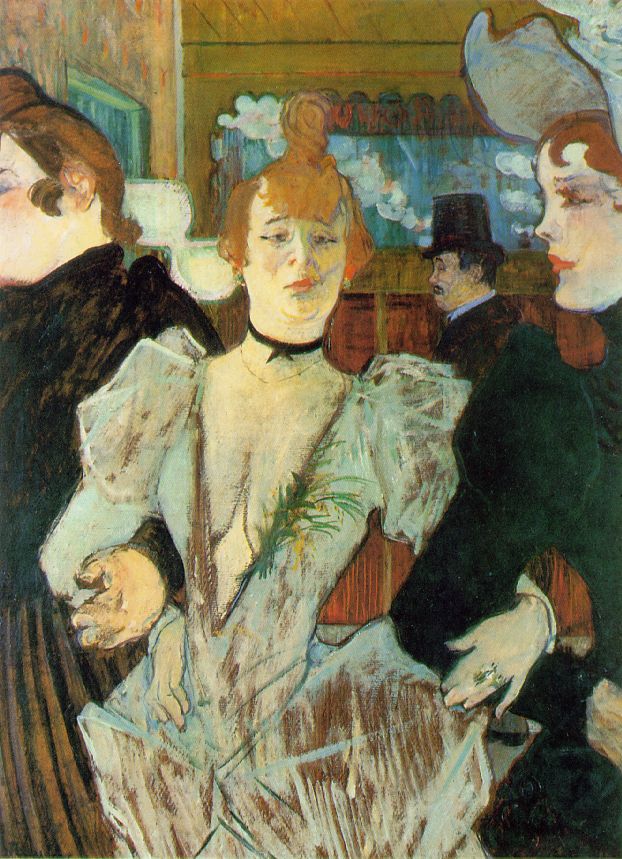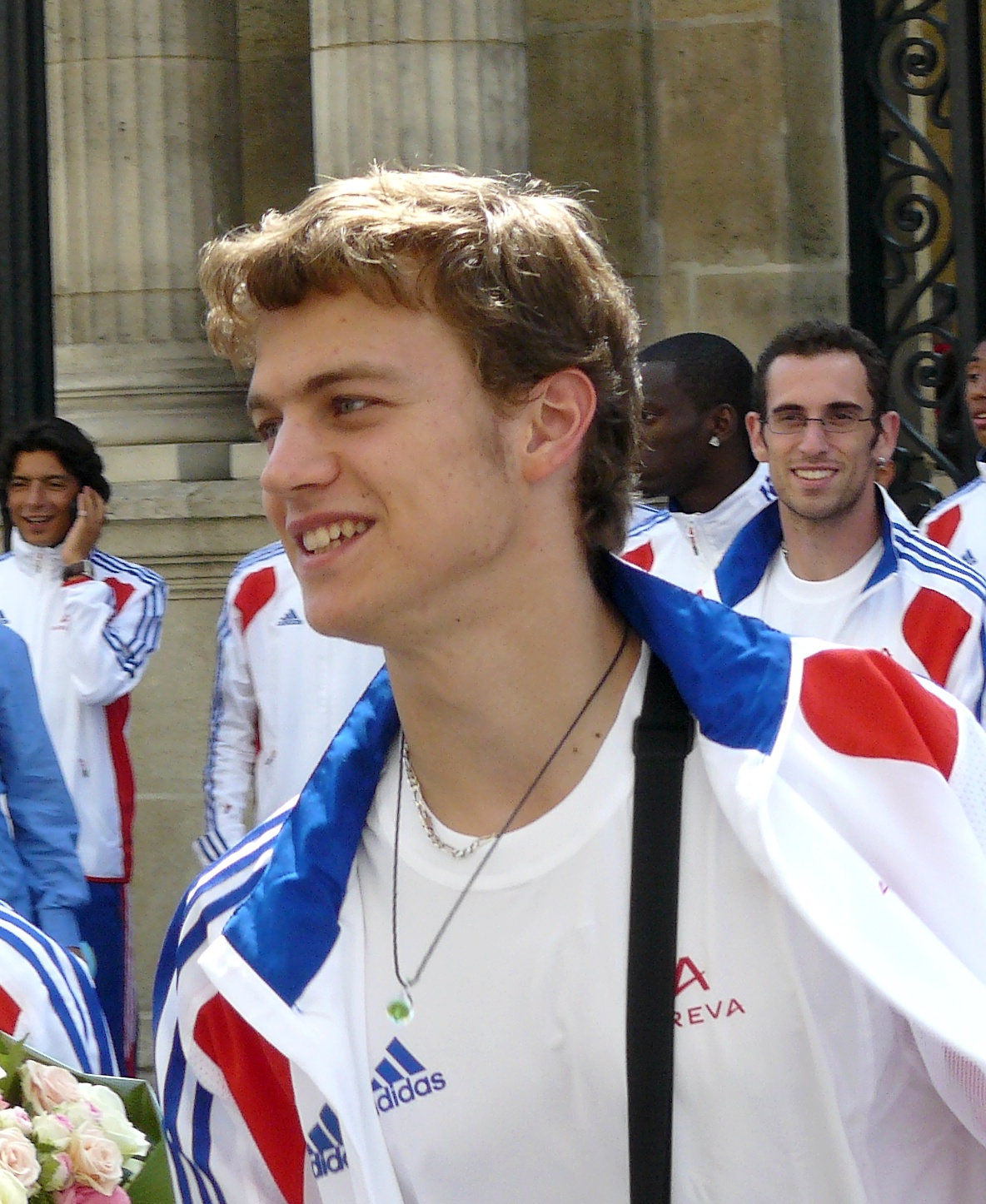|
Patrick Johnson (sprinter)
Patrick Johnson (born 26 September 1972 in Cairns, Queensland, Australia) is an Australian athlete of Aboriginal and Irish descent. He is the current Oceanian and Australian record holder in the 100 metres with a time of 9.93 seconds, which he achieved in Mito, Japan, on 5 May 2003. With that time he became the first person not of African ancestry to break the 10-second barrier (Frankie Fredericks, a Namibian, had been the first non-West-African in 1991). The time made him the 17th fastest man in history at the time and 38th man to crack the 10-second barrier.Jad Adrian (July 2011)Lists of The Fastest White Men in History, Non-African Descent Retrieved 2011-07-30. He was regarded as the fastest man of non-African descent before Christophe Lem ... [...More Info...] [...Related Items...] OR: [Wikipedia] [Google] [Baidu] |
Track And Field
Track and field is a sport that includes athletic contests based on running, jumping, and throwing skills. The name is derived from where the sport takes place, a running track and a grass field for the throwing and some of the jumping events. Track and field is categorized under the umbrella sport of athletics, which also includes road running, cross country running and racewalking. The foot racing events, which include sprints, middle- and long-distance events, racewalking, and hurdling, are won by the athlete who completes it in the least time. The jumping and throwing events are won by those who achieve the greatest distance or height. Regular jumping events include long jump, triple jump, high jump, and pole vault, while the most common throwing events are shot put, javelin, discus, and hammer. There are also "combined events" or "multi events", such as the pentathlon consisting of five events, heptathlon consisting of seven events, and decathlon consisting of ... [...More Info...] [...Related Items...] OR: [Wikipedia] [Google] [Baidu] |
Athletics Australia
Athletics Australia is the national sporting organisation (NSO) recognised by Sport Australia for the sport of athletics in Australia. First founded in 1897, the organisation is responsible for administering a sport with over 16,000 registered athletes, coaches and officials.- Athletics Australia - Annual Report 2006/07 History Athletics Australia (AA) was originally the Athletic Union of , an amateur group founded in 1897. In 1928, broke away to form its own national body, leaving what was kn ...[...More Info...] [...Related Items...] OR: [Wikipedia] [Google] [Baidu] |
Irish People
The Irish ( ga, Muintir na hÉireann or ''Na hÉireannaigh'') are an ethnic group and nation native to the island of Ireland, who share a common history and culture. There have been humans in Ireland for about 33,000 years, and it has been continually inhabited for more than 10,000 years (see Prehistoric Ireland). For most of Ireland's recorded history, the Irish have been primarily a Gaelic people (see Gaelic Ireland). From the 9th century, small numbers of Vikings settled in Ireland, becoming the Norse-Gaels. Anglo-Normans also conquered parts of Ireland in the 12th century, while England's 16th/17th century conquest and colonisation of Ireland brought many English and Lowland Scots to parts of the island, especially the north. Today, Ireland is made up of the Republic of Ireland (officially called Ireland) and Northern Ireland (a part of the United Kingdom). The people of Northern Ireland hold various national identities including British, Irish, Northern Irish or som ... [...More Info...] [...Related Items...] OR: [Wikipedia] [Google] [Baidu] |
Indigenous Australian
Indigenous Australians or Australian First Nations are people with familial heritage from, and membership in, the ethnic groups that lived in Australia before British colonisation. They consist of two distinct groups: the Aboriginal peoples of the Australian mainland and Tasmania, and the Torres Strait Islander peoples from the seas between Queensland and Papua New Guinea. The term Aboriginal and Torres Strait Islander peoples or the person's specific cultural group, is often preferred, though the terms First Nations of Australia, First Peoples of Australia and First Australians are also increasingly common; 812,728 people self-identified as being of Aboriginal and/or Torres Strait Islander origin in the 2021 Australian Census, representing 3.2% of the total population of Australia. Of these indigenous Australians, 91.4% identified as Aboriginal; 4.2% identified as Torres Strait Islander; while 4.4% identified with both groups. [...More Info...] [...Related Items...] OR: [Wikipedia] [Google] [Baidu] |
Kaanju
The Kaantyu people are an Aboriginal Australian people of the Cape York Peninsula in north Queensland. They live in the area around the present-day town of Coen. Most of their traditional tribal land has been taken over for cattle stations. ''Kaantju'' refers to the hook of the ''yuli'', their word for woomera. Language The Kaantyu language is a dialect, with northern and southern varieties, of Umpila. Ecology The Kantyu live in the foothills of the Great Dividing Range along and around the upper tributaries of the Archer River, and the Watson river to the north, and the Edward southwards, from the junction of the Coen and Archer rivers to the mouth of the Archer and the junction of the Kendall and Holroyd extending over approximately . To their west they were separated from the coastal waters of the gulf of Carpentaria by the Wik-Natera and Wik-Kalkan tribes. To their south, along the Coleman River were the Bakanu and the Kunjen speaking Olkola. Social relations The Kaa ... [...More Info...] [...Related Items...] OR: [Wikipedia] [Google] [Baidu] |
2000 Olympic Games
The 2000 Summer Olympics, officially the Games of the XXVII Olympiad and also known as Sydney 2000 (Dharug: ''Gadigal 2000''), the Millennium Olympic Games or the Games of the New Millennium, was an international multi-sport event held from 15 September to 1 October 2000 in Sydney, New South Wales, Australia. It marked the second time the Summer Olympics were held in Australia, and in the Southern Hemisphere, the first being in Melbourne, in 1956. Sydney was selected as the host city for the 2000 Games in 1993. Teams from 199 countries participated in the 2000 Games, which were the first to feature at least 300 events in its official sports programme. The Games' cost was estimated to be A$6.6 billion. These were the final Olympic Games under the IOC presidency of Juan Antonio Samaranch before the arrival of his successor Jacques Rogge. The 2000 Games were the last of the two consecutive Summer Olympics to be held in a predominantly English-speaking country fo ... [...More Info...] [...Related Items...] OR: [Wikipedia] [Google] [Baidu] |
2005 IAAF World Championships In Athletics
The 10th World Championships in Athletics, under the auspices of the International Association of Athletics Federations (IAAF), were held in the Olympic Stadium, Helsinki, Finland (6 August 2005 – 14 August 2005), the site of the first IAAF World Championships in 1983. One theme of the 2005 championships was paralympic events, some of which were included as exhibition events. Much of the event was played in extremely heavy rainfall. Background Bidding The original winning bid for the competition was for London but the cost to build the required stadium at Picketts Lock and host the event was deemed too expensive by the government. UK Athletics suggested to move the host city to Sheffield (using Don Valley Stadium), but the IAAF stated that having London as the host city was central to their winning the bid. The championships bidding process was reopened as a result. The United Kingdom's withdrawal as host was the first case for a major sporting event in a developed country ... [...More Info...] [...Related Items...] OR: [Wikipedia] [Google] [Baidu] |
2006 Commonwealth Games
The 2006 Commonwealth Games, officially the XVIII Commonwealth Games and commonly known as Melbourne 2006 (Boonwurrung/Woiwurrung: ''Narrm 2006'' or ''Naarm 2006''), was an international multi-sport event for members of the Commonwealth held in Melbourne, Australia between 15 and 26 March 2006. It was the fourth time Australia had hosted the Commonwealth Games. It was also the largest sporting event to be staged in Melbourne, eclipsing the 1956 Summer Olympics in terms of the number of teams competing, athletes competing, and events being held. More than 4,000 athletes from 71 Commonwealth Games Associations took part in the event. Zimbabwe withdrew its membership from the Commonwealth of Nations and Commonwealth Games Federation on 8 December 2003 and so did not participate in the event. With 245 sets of medals, the games featured 17 Commonwealth sports. These sporting events took place at 13 venues in the host city, two venues in Bendigo and one venue each in Ballarat, Geel ... [...More Info...] [...Related Items...] OR: [Wikipedia] [Google] [Baidu] |
200m
The 200 metres, or 200-meter dash, is a Sprint (running), sprint running event. On an outdoor 400 metre racetrack, the race begins on the curve and ends on the home straight, so a combination of techniques is needed to successfully run the race. A slightly shorter race, called the ''Stadion (ancient sports), stadion'' and run on a straight track, was the first recorded event at the ancient Olympic Games. The 200 m places more emphasis on speed endurance than shorter sprint distances as athletes predominantly rely on anaerobic energy system during the 200 m sprint. Similarly to other sprint distances, the 200 m begins from the starting blocks. When the sprinters adopt the 'set' position in the blocks they are able to adopt a more efficient starting posture and Isometric exercise#Isometric presses as preparation for explosive power movements, isometrically preload their muscles. This enables them to stride forwards more powerfully when the race begins and start faster. ... [...More Info...] [...Related Items...] OR: [Wikipedia] [Google] [Baidu] |
Albi
Albi (; oc, Albi ) is a commune in southern France. It is the prefecture of the Tarn department, on the river Tarn, 85 km northeast of Toulouse. Its inhabitants are called ''Albigensians'' (french: Albigeois, Albigeoise(s), oc, albigés -esa(s)). It is the seat of the Archbishop of Albi. The episcopal city, around the Cathedral Sainte-Cécile, was added to the UNESCO list of World Heritage Sites in 2010 for its unique architecture. The site includes the Musée Toulouse-Lautrec, dedicated to the artist who was born in Albi. Administration Albi is the seat of four cantons, covering 16 communes, with a total population of 72,416 (2019). History The first human settlement in Albi was in the Bronze Age (3000–600 BC). After the Roman conquest of Gaul in 51 BC, the town became ''Civitas Albigensium'', the territory of the Albigeois, ''Albiga''. Archaeological digs have not revealed any traces of Roman buildings, which seems to indicate that Albi was a modest Roman ... [...More Info...] [...Related Items...] OR: [Wikipedia] [Google] [Baidu] |
Christophe Lemaitre
Christophe Lemaitre (; born 11 June 1990) is a French sprinter who specialises in the 100 and 200 metres. In 2010, Lemaitre became the first white athlete to break the 10-second barrier in an officially timed 100 m event. Lemaitre has run a sub-10 second 100m on seven occasions: three times in 2010 and four times in 2011. He won a bronze medal in the 4 × 100 m relay at the 2012 London Olympic Games and in the 200 metres at the Rio 2016 Summer Olympics. At the age of 20, Lemaitre won the 100 m, 200 m and the 4×100 m relay titles at the 2010 European Championships, the first French sprinter ever to achieve that triple. He was the fastest European 100 m and 200 m sprinter in 2010. He won a bronze medal in the 200 m at the 2011 World Championships. As of August 2013, Lemaitre was one of the three Frenchmen (the other two are Ronald Pognon and Jimmy Vicaut) to have broken the 10-second barrier in the 100 metres outdoor. Due to injury and a negative reaction to ... [...More Info...] [...Related Items...] OR: [Wikipedia] [Google] [Baidu] |
10-second Barrier
The 10-second barrier is the physical and psychological barrier of completing the 100 metres sprint in under ten seconds. The achievement is traditionally regarded as the hallmark of a world-class male sprinter. Its significance has become less important since the late 1990s, as an increasing number of runners have surpassed the ten seconds mark. The current men's world record holder is Usain Bolt, who ran a 9.58 at the 2009 IAAF World Championship competition. History For sprints, World Athletics maintains that world records and other recognised performances require: a wind assistance of not more than two metres per second () in the direction of travel; fully automatic timing (FAT) to one hundredth of a second; and no use of performance-enhancing substances. Wind gauge malfunctions or infractions may invalidate a sprinter's time. Hand timing Prior to 1977, FAT was not required for IAAF official timings. Times were recorded manually to one tenth of a second; three official ... [...More Info...] [...Related Items...] OR: [Wikipedia] [Google] [Baidu] |





